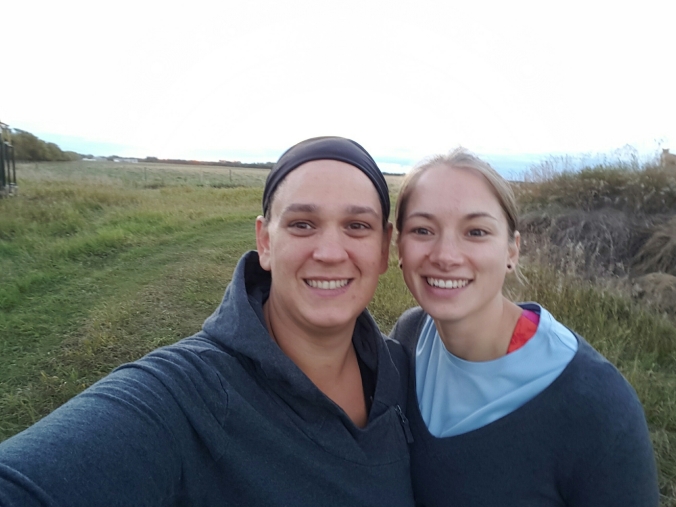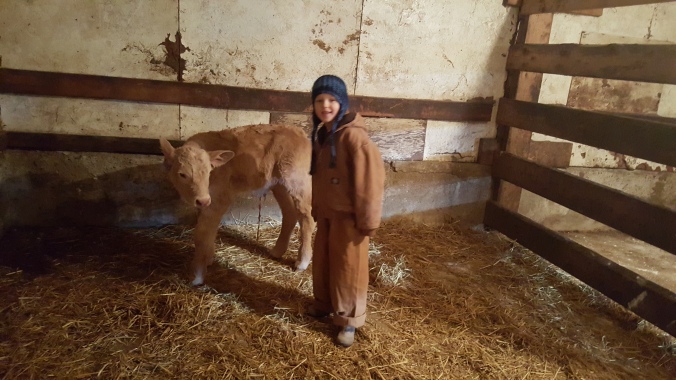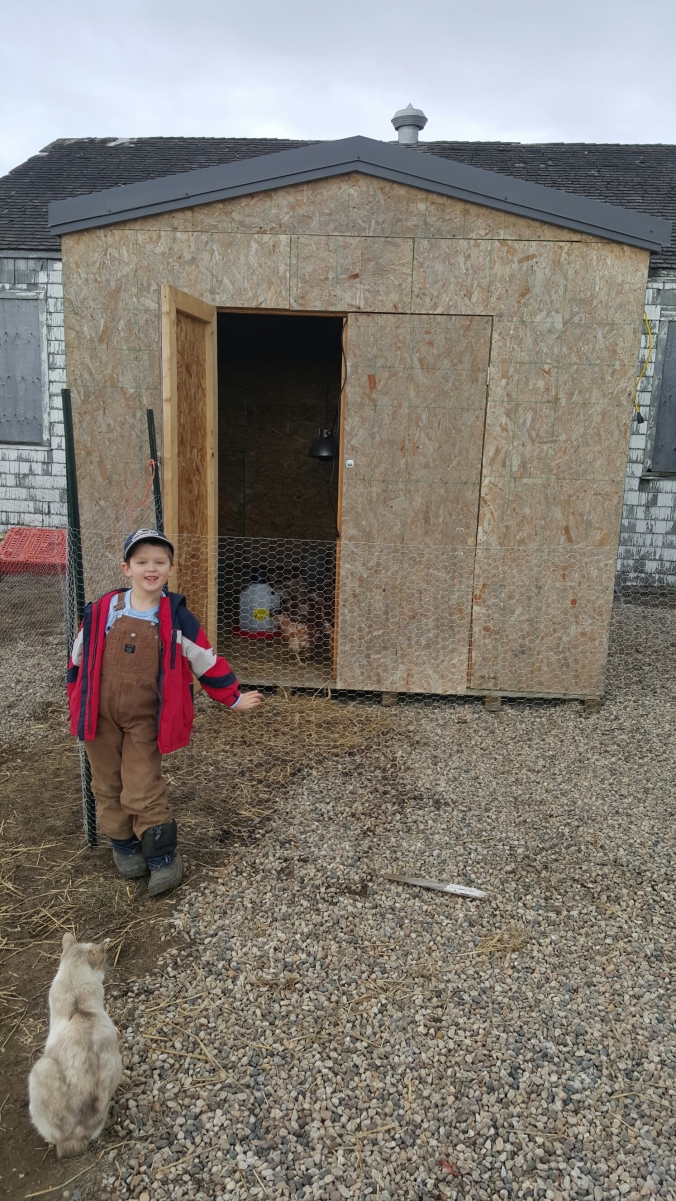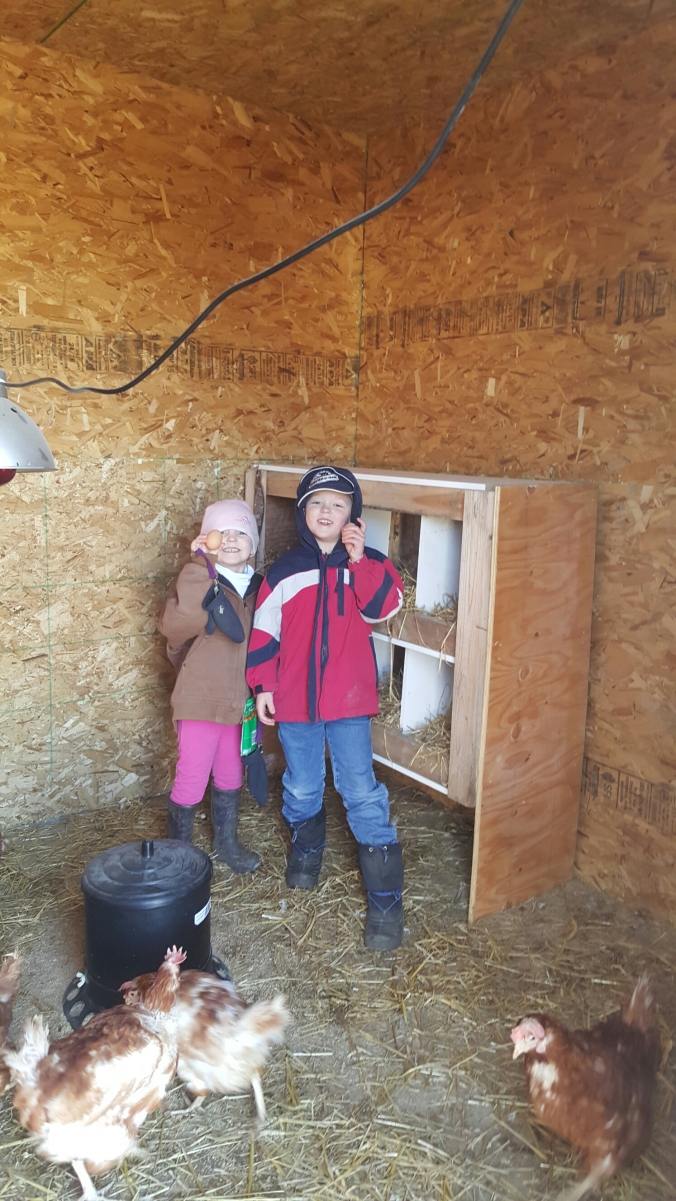When I started my blog years ago, I named it “Fit2Farm” with plans of melding my world of farming and my love of fitness which morphed more so into just farming and advocacy. Today I’m sharing a bit of my wellness journey over the past five years.
When I moved home to the farm in 2013, I was at my peak fitness. I had just finished my first triathlon and then ran a personal best half marathon shortly after. I was running 3 days a week, plus strength training and yoga. I was on the top of my game. Then in early 2104, I slipped while running outdoors. I went to Physiotherapy and was initially diagnosed with a glute tear. I did Physio, but the pain never really went away, and I started to lose a lot of my flexibility in my hips. I gained weight. I felt like an impostor in the fitness world, unconditioned and overweight. I kept trying to get better and I kept working out.
In late 2014, I found out I was pregnant with my third child. It was a rough pregnancy. I got fewer work outs in. My mobility further suffered. I had wicked pelvic pain. I started to hobble/limp and figured it was a result of my third pregnancy and age (I was 35). After I had my baby girl, I told my doctor about my concerns and was referred for Physio therapy again. This time was diagnosed with public symphysis disorder and bursitis in my hips. I did 2 years of Physio with 3 different therapists. Some of the exercises were too painful to completely execute but I was assured I just needed time and to keep at it. I hit the gym again and started walking with a friend but by the end of 5 km I was limping significantly. My mobility and pain never improved. I muscled my way through breeding seasons walking 15-20 km/day and the rest of the demands associated with cattle ranching. I started beekeeping and worked through hauling around 100 lb. supers of honey. I did rangeland assessment work, again hiking 10-20 km/day. I figured it was me. I talked with my doctor along the way, but it seemed like this was the proper mode of treatment.
Finally, this December, I went back to my doctor, nearly in tears due to frustration and pain. He referred me to a specialist to get a MRI to figure out a suspected hip ligament tear. As an extra precaution, he also ordered a hip X-ray just in case and for the specialist to speed along the process. The following week in I was back in my doctor’s office for some big news.
My X-ray showed advanced bilateral osteoarthritis. My hips are in bad shape. I received a referral to the orthopedic surgeon in Saskatoon for a consult. My husband and I went to the referral last week. My joints are too degenerated for anything other than hip replacements. I have no cartilage left in either hip, the bones are deteriorated and I developed some pretty impressive bones spurs. We expected the news but hoped for better. I’m 37 years old and in the next year will be having both my hips replaced. I am told that I have hip dysplasia and even four years ago, there wouldn’t have been much to be done.

My left hip, soon to become ceramic and metal.
I worry for my young family and our farm. My kids are 2, 6 and 8 years old. They are quite used to my mobility issues, but I am not sure how 2 major surgeries will treat them. I also have a farm business and consulting company to run. Last year I ran 17 beehives, took on new contract work and helped with the cows as much as possible. I’m feisty. We will make it through, but I am still a bit worried and honestly, a bit angry about the situation. As a farmer, and really in all aspects of my life, I am used to muscling through a rough path. I am told there is no powering through on joints with without cartilage. In my bones, I know my surgery is necessary (pun intended) but it will take a bit of farmer ingenuity to get this figured out and I look forward to getting my mobility back post-surgery.










 Spring seems to have sprung very early this year- I hope I’m not jinxing anything by this post! Our winter has been crazy mild and we are looking ahead to this year’s pasture season. Our yearling heifers are currently on grass at on our home quarter and will likely stay here all summer. I started my evening walks to see these girlies. I love their curiousity and frisky demeanour. Heifers are naturally super curious and the spring air gives them lots of energy for frolicking. Check out this video of us strolling about together and some geese flying back home to prove my point that spring is here.
Spring seems to have sprung very early this year- I hope I’m not jinxing anything by this post! Our winter has been crazy mild and we are looking ahead to this year’s pasture season. Our yearling heifers are currently on grass at on our home quarter and will likely stay here all summer. I started my evening walks to see these girlies. I love their curiousity and frisky demeanour. Heifers are naturally super curious and the spring air gives them lots of energy for frolicking. Check out this video of us strolling about together and some geese flying back home to prove my point that spring is here.




